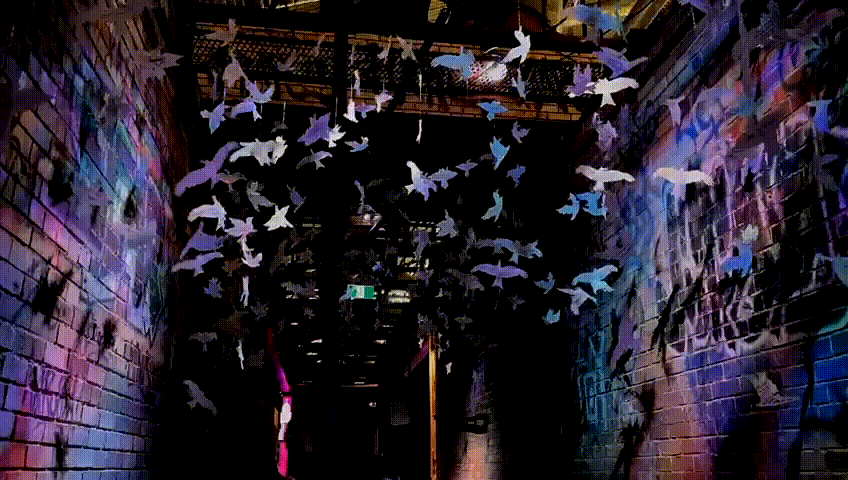
Our Story
Space for Grief is
an immersive public art experience
a growing global movement
an exploration of community bonding and healing through art and grief
The initiative aims to destigmatize the expression of grief, as well as inspire and provoke important social conversations. We create spaces for grief in physical arenas and individual headspaces, bridging the gap between social and personal processes of grieving.
Space for Grief is a placemaking initiative with roots in wellness, healthcare, and peacebuilding. It explores how we can rethink the futures of individual and community well-being through systems theory and strategic foresight, using art as a vehicle for storytelling, immersion, and connection.
Following incredible local and international responses in the first two installations at Toronto’s premier Reference Library—one of North America’s busiest library systems and Evergreen Brick Works—a central public greenspace in a former quarry and industrial site—Space for Grief is continuing to reach new audiences and formats, driving its mission forward.
Space for Grief is a project conceived from the research, creativity, and work of Method Collective.
We are a design studio working at the intersection of systems and foresight to create systems and cultural change powered by research, community engagement, and interactive, experiential, and/or art-based interventions such as Space for Grief.
Through our consultancy work, as well as our academic research on grief and death rituals, we observed unaddressed grief and stigma across multiple sectors, including housing, sports, life transitions, and more. This highlighted a cultural and systemic gap that often leaves many people with no support or places to go during the most difficult times of their life.
Our projects utilize 3 core approaches
Systems allows us to deeply understand the interconnectedness of people, organizations, government, technology, and nature, in order to design solutions that create more inclusive and peaceful futures.
Systems
Looking to the past, and present, analyzing systemic trends and drivers across social, technological, economic, environmental and political perspectives to build resilience into products and services.
Foresight
Using design thinking to understand needs of human and non-human stakeholders impacted by an intervention and design according to behavioural economic and inclusive design principles.
Life-centered design
Why Now?
Grief, when unaddressed, costs North America alone over $200bn in healthcare costs as well as costs arising from missed work, lowered productivity, absenteeism and even the loss of one’s own potential.
When grief is pushed aside, it doesn’t disappear—it seeps into every aspect of our well-being, manifesting as serious physical and mental health issues. While many turn to cultural or religious rituals to navigate their loss, a growing number of people lack access to these traditions or do not subscribe to religious practices, leaving them without a community or space to seek solace.
This absence of support during life’s most challenging moments leaves people vulnerable, stripped of the rituals that could offer comfort and connection.
As societal norms around grief evolve, there’s an increasing difficulty in offering meaningful support to those who have experienced loss. The stigma, the lack of support, and the absence of safe spaces for grief deepen the sense of loneliness and social isolation.
Grief is too often expected to be private, confined to the shadows or limited to exclusive environments like religious settings. This expectation leaves many without a place to openly express their pain, pushing them further into isolation.






